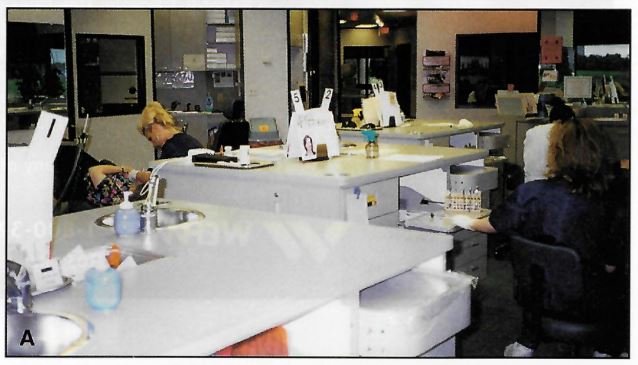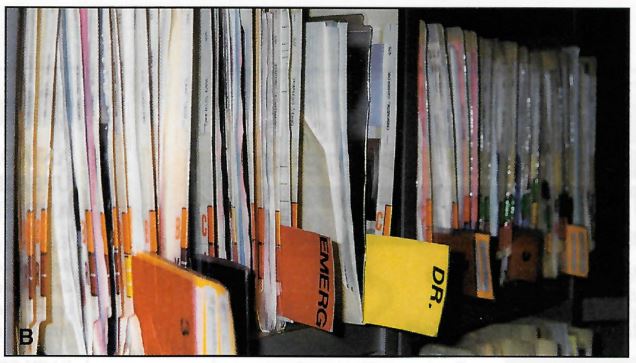Dr. Edward Sullivan of El Paso, Texas, places flags with large numbers (A) in patients' treatment charts when they are seated in the operatory. During busy times, this lets him know which chair to go to next, and it keeps the patients aware of where they are in the schedule. He places a smaller, colored flag under the normal white flag to indicate a quick check, allowing him to change the sequence if necessary to free up a chair.
We have adopted this system with a great deal of success. I suggest making twice as many flags as you have chairs and rotating them as needed.
In addition, we have the front desk place a red flag labeled "EMERG" in the chart of any patient arriving for an emergency appointment (B). This keeps the assistant from performing the next service scheduled on the chart. We also have a yellow flag marked "DR." for charts that need to be placed in my office for telephone calls or other uses. Blue flags are placed in charts of patients requiring correspondence. A blue flag with a "T" indicates a patient who will be transferring, and begins a checklist of steps that are followed until the transfer packet is mailed. An orange flag means there is a financial matter that must be resolved before the chart can go to the treatment area; a white peel-and-stick label with pertinent details is placed on each orange flag.
Your use of the treatment flags is limited only by your imagination.
Similar articles from the archive:
- THE CUTTING EDGE The Aligner Treatment Chart April 2007
- Use of Stamped Chart Notations to Enhance Patient Compliance July 1992
- Problem-Oriented Orthodontic Record February 1986




